NetApp FAS2040A unboxing
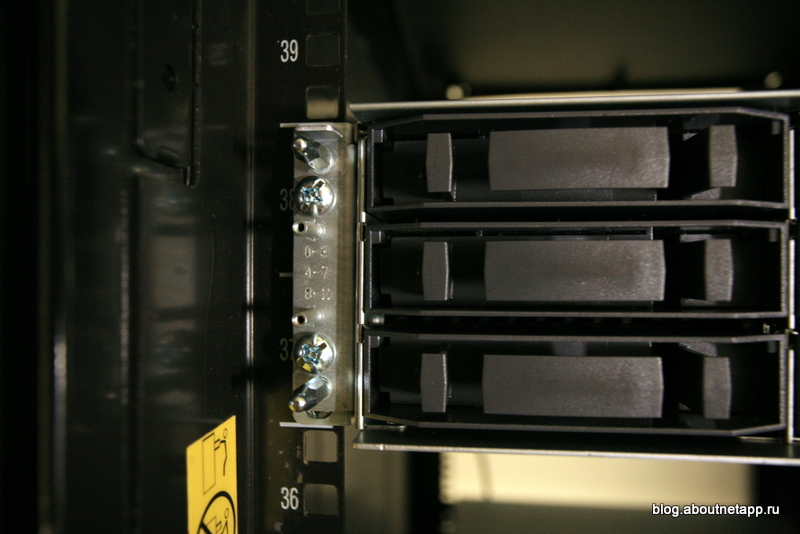
And today I want to show you a selection of photos taken recently by one of my colleagues, in the unboxing genre, which is popular with geeks, with the FAS2040A system that recently came to them with an additional DS4243 disk shelf. By the way, this is exactly the project about which I wrote my previous (so surprisingly unpopular in this blog) post.
A couple of months ago, the equipment was delivered to the customer, and I asked him to take pictures of some of the basic stages of unpacking and installation to show them to you.
In this case, since NetApp FAS2040A with DS4243 disk shelf arrived much earlier than the rest of the kitchen (for which great respect for distributors and partners for efficiency, some would learn), we started with it, and that is why there is nothing in the photo except for it . But here, in the end, not a blog of Cisco;). As of today, the project has already been fully deployed and put into “trial operation”.
')
So, this is what you get when a new NetApp stack arrives.
Unfortunately, we didn’t take the very first picture, with a fully closed and packed box, but when you open it, the first thing you find under it is a set of mounting hardware, so-called "rails", as well as cables and a quick start guide.

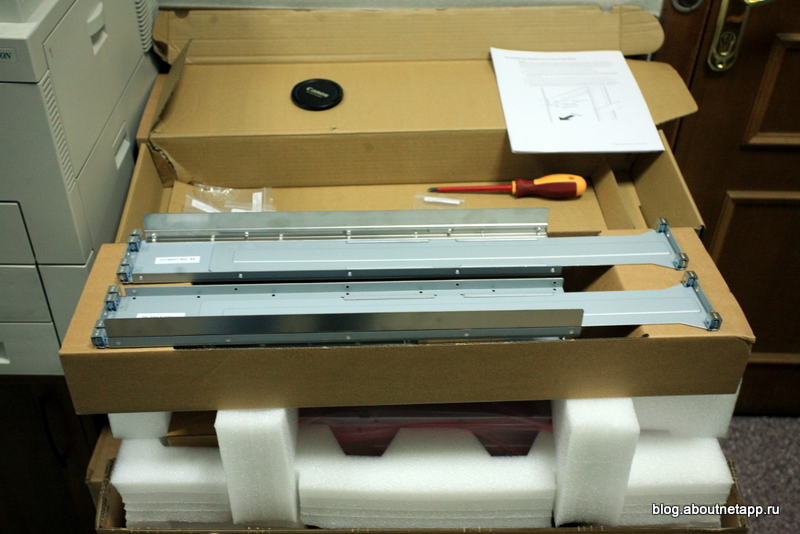
Please note that the kit includes two sets of fasteners (screws and nuts), for metric and inch threads. Choose what you use, so that you don’t get confused.

The mounting bracket is installed in a rack and is ready for placement of the stack itself.
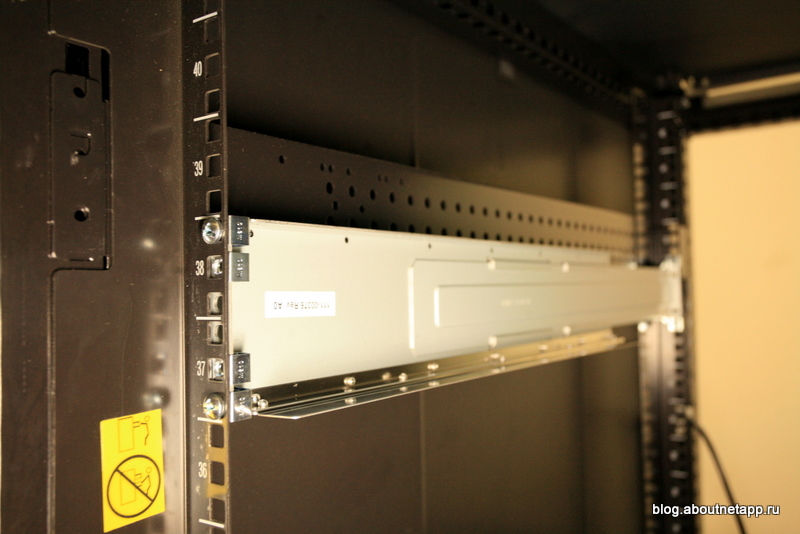
Unpack the actual FAS2040A.
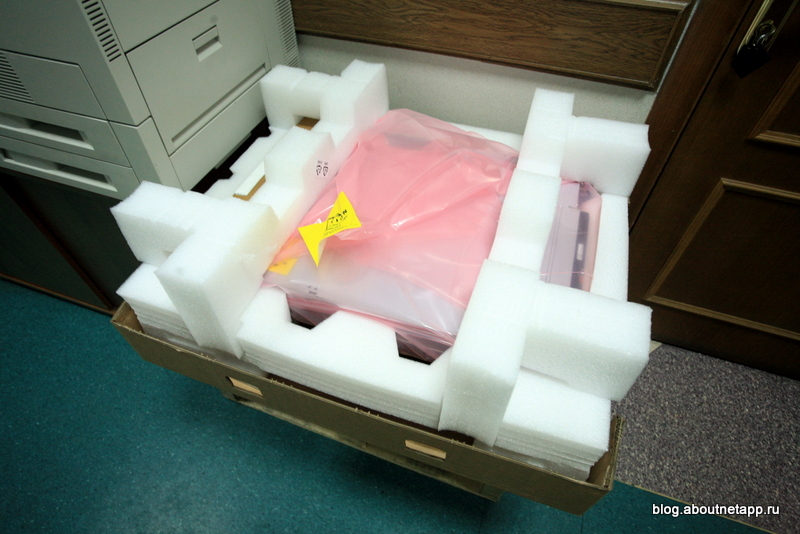
It is, I recall, a device with a height of 2RU (“two units”). In the box it is on the stops of their foam. Pimply film, alas, was not found :) Right there, on the front side, is a cardboard box with a “muzzle” - bezel - front decorative cover.

So it looks like the unpacked FAS2040A from the “face”, still without the installed “muzzle” - bezel. I have already said that in this project we use the FAS2040A version without the discs installed in the case, although this option is possible. In place of the discs in the case there are 12 plastic plugs, and the discs are located in a separate disk shelf, about which below.
If you buy a system with installed drives, and this is also possible, there will be 12 SAS or SATA drives. Perhaps later we will add additional disks here if we do not have enough space or speed.

This is a story "from the tail." Here you can see two installed controllers, 4 Gigabit Ethernet ports on each (right), then two service Ethernet ports and a console port, then a SAS port for connecting a disk shelf and, finally, two FC ports. To the right and left of the controllers are two power supply fans. The red bolt is used to unlock and pull the controller out of the case, if you need to remove it and replace it in case of a malfunction.

On the left, when viewed from the face, there is a sticker on the case with a serial number (two, for each controller separately) of the system. You will need them for registration in the support.
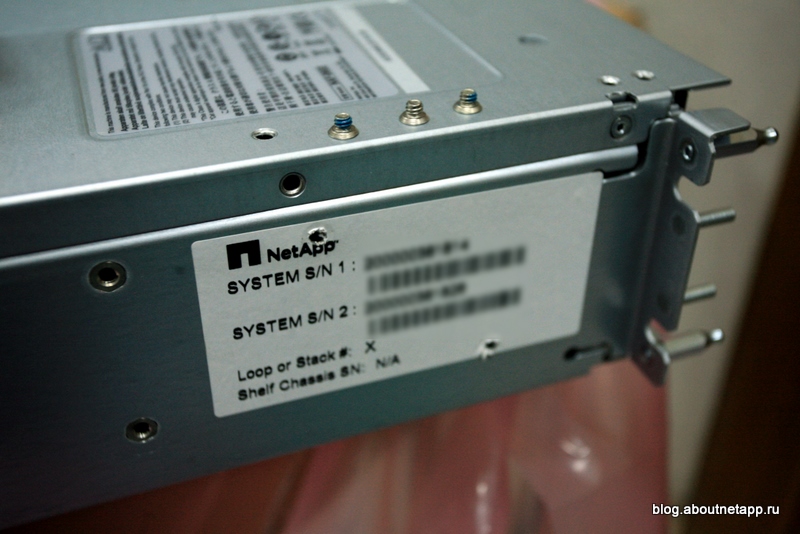
And finally, the FAS2040A took its place in the rack.
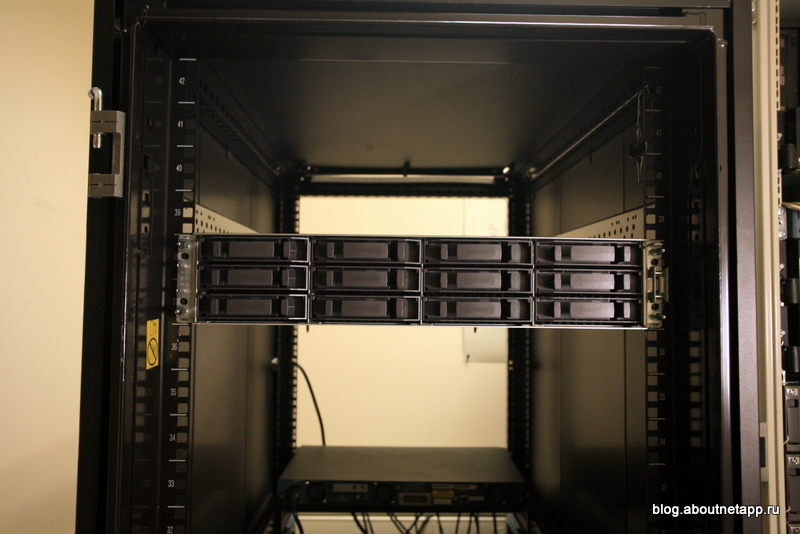

Now everything is neat, the disks, or rather, in this case, the caps, are hidden under the cover.
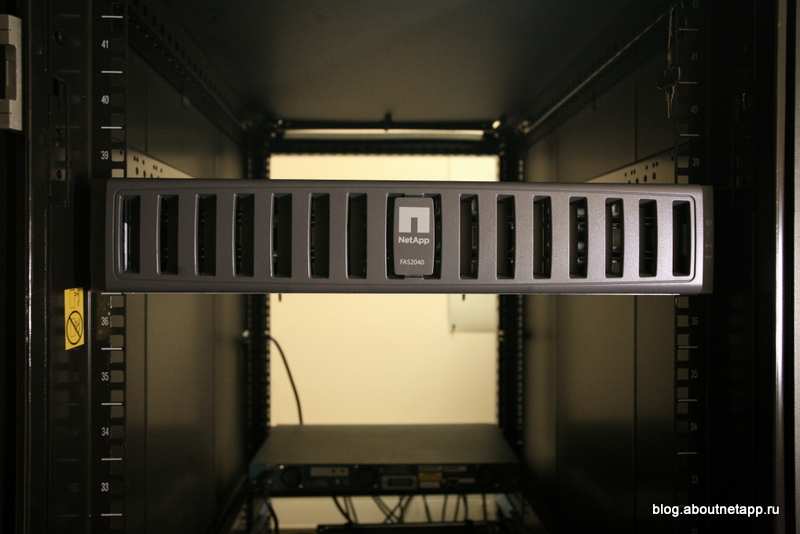
Let's go to the disk shelf. Here it is in the box on the pallet. Pay attention to the inscription - 92kg. Really heavy.
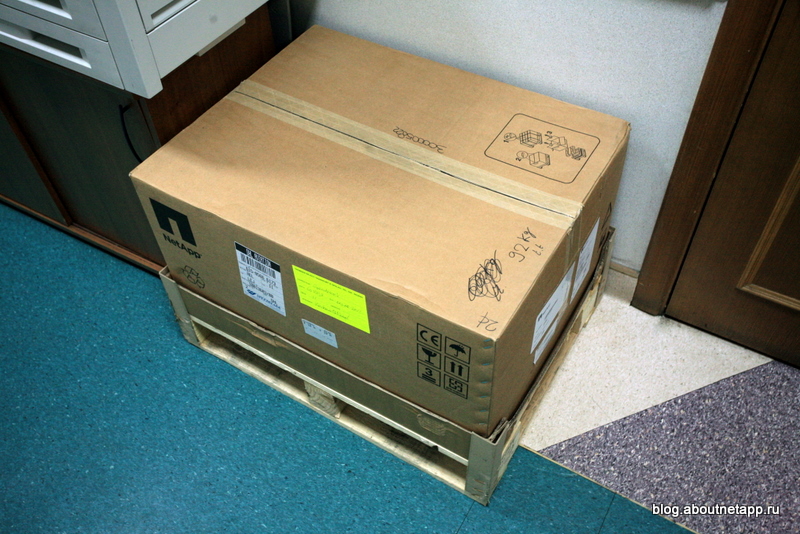
Above, as in the case of the base unit, are the "rails" and fasteners, as well as cable.
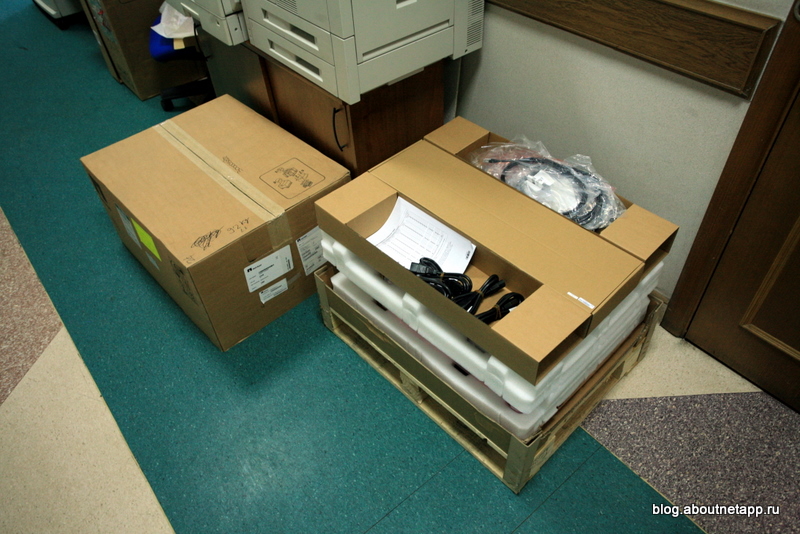
Included with the disk shelf are two SAS cables, three ethernet cables to enable a special out-of-band “network” of controllers controllers, and 4 power cables (in the shelf with SAS drives there are 4 power supplies, in the shelf with SATA drives - 2 )
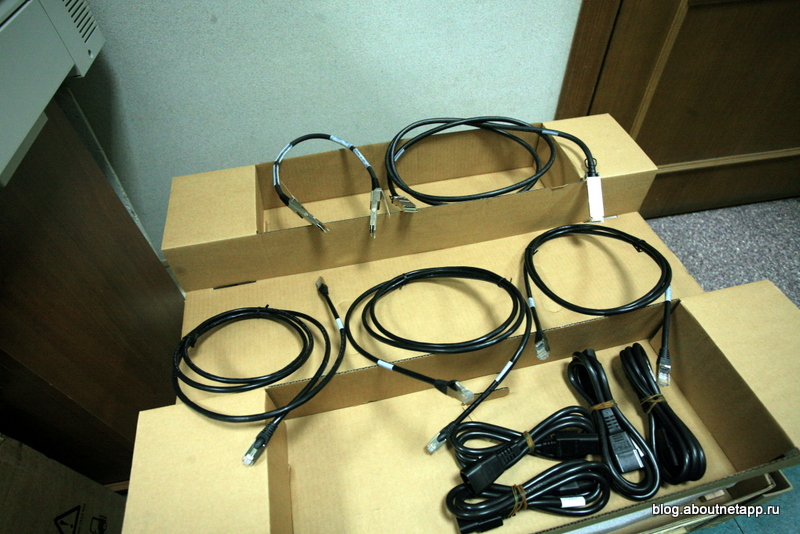
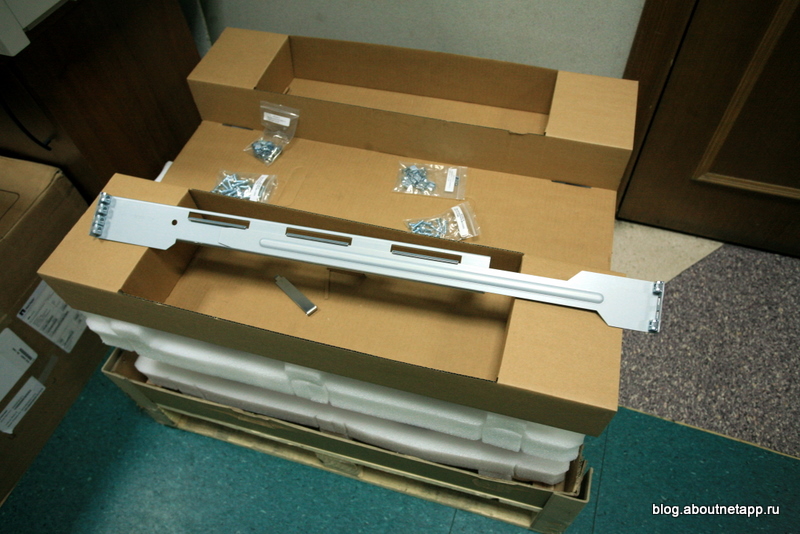
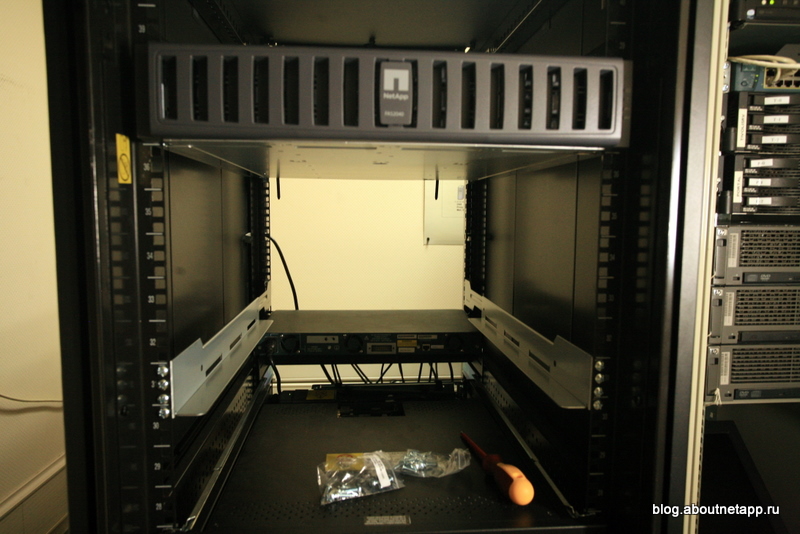
Mount in the cabinet is installed, you can start loading the shelf.
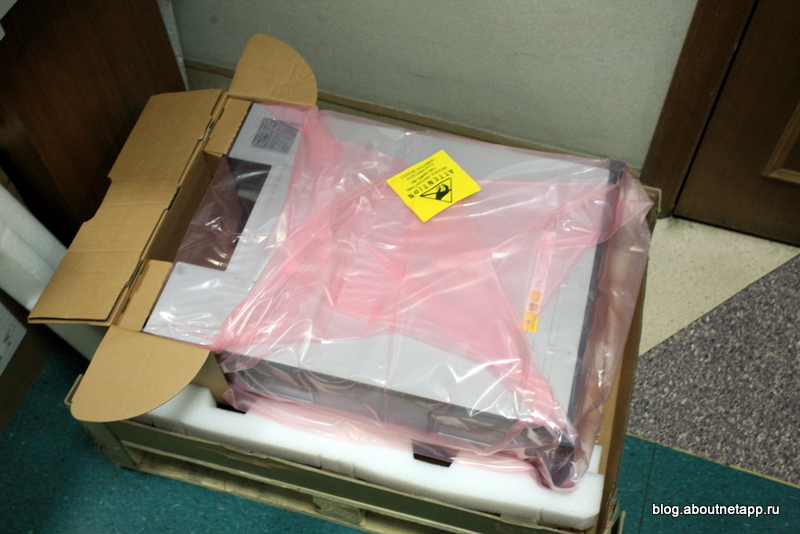
Unpacked shelf, 4U high, in which there are 24 SAS disks. Pay attention to two sets of handles for lifting. For installation will require the efforts of at least two people.

Everything is ready to connect and run.
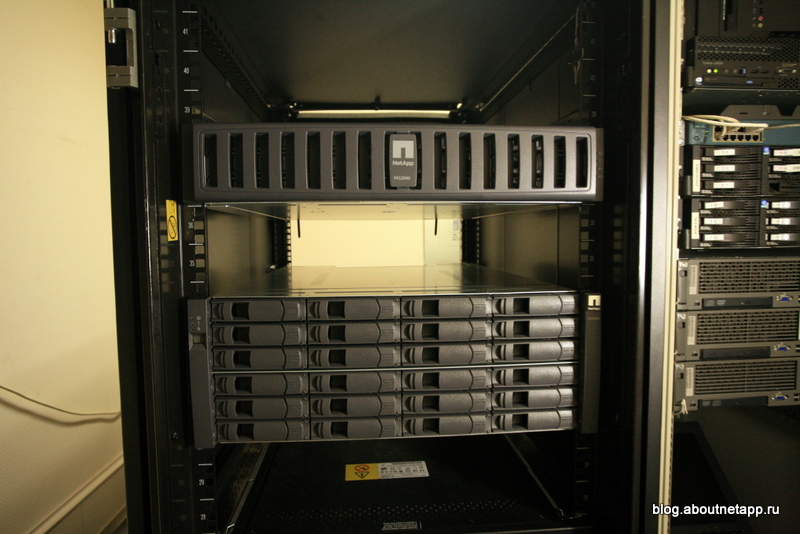
Some details on the implemented project can be found in my previous post, there are also details about the use of the storage system and its configuration.
And quite at the end a little organizational. Since after recent improvements on Habrahabr here, it seems that the blogs of companies have finally cut out of the tapes, that is, what you are reading now. Unfortunately, this, as I see it, has drastically reduced the number of its readers. Most likely, if you have not added a company to your “favorites”, you will not be able to see new posts from it in the stream. So if you want to continue to read posts on the NetApp blog, I recommend adding this blog and its company to your favorites by clicking on the “heart” in the title.
Special thanks to the blog.aboutnetapp.ru blog for the provided photos and the work on making the project a reality.
Source: https://habr.com/ru/post/134064/
All Articles